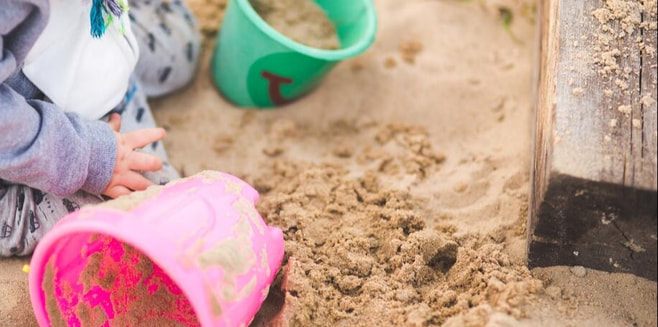|
Let’s talks about sensory play!
Kids on the spectrum often have difficulty coping with everyday sensory stimuli which can make it hard for them to live in our world. Everyday experiences the rest of us take for granted can be overwhelming or feel impossible for a child with special needs to navigate or deal with. We’ve found that incorporating sensory play helps them cope with the hectic, loud, over stimulated world we live in and the bonus is that it also develops their social and cognitive skills. What Is Sensory Play? Sensory play is a fun activity that engages one or more of your senses. Some think we only have 5 senses - touch, taste, sight, sound, and smell but we actually have eight – body awareness (proprioception), and inner awareness (interoception), balance (vestibular). Not only does it offer an easy and natural way for children to connect with their world, but it also helps to develop language skills, fine and gross motor skills, social skills, and self-control through a calming effect which is very helpful for children with special needs. Sensory play has helped our boys develop these skills as well as calm them down when life gets a bit to stimulating. Sensory Bins One form of sensory play we LOVE are sensory bins Here are some fun DIY sensory bins ideas. (Note: Adult supervision and assistance is recommended) Sensory bins are absolutely wonderful for kids. They allow them to explore their senses (in particular the sense of touch). They also allow for open-ended play, which is one of the best ways for our kids to learn and explore. Here are a few sensory bin fillers we use and love.
You don’t need to break the bank and the dollar store is your best friend if you don’t have these items at home.
If you want to get a little more creative, here are a couple of easy DIY filler recipes: CLOUD DOUGH To make just one batch of cloud dough you’ll need the following ingredients. Should you have a large sensory table we suggest to double or even triple the recipe.
HOW TO MAKE CLOUD DOUGH
COLORED MOON SAND YOU WILL NEED:
Substitute coconut oil for cooking oil or baby oil If you don’t have oil-based food coloring, leaving the moon sand plain is fine. It will look like beach sand. Make it gluten-free with a gluten-free flour mix Add a hint of scent with a few drops of vanilla or a bit of cinnamon spice. HOW TO MAKE MOON SAND: TIP 1: Make sure to use oil-based food coloring in this tutorial. The standard food coloring will not work because moon sand is oil based. TIP 2: Moon Sand can also be colored using chalk and powdered tempera paint. STEP 1: Melt ¼ melted coconut oil and mix with 1 tsp of food coloring in a large bowl. (Add more food coloring to achieve the desired color) STEP 2: Add the flour to the oil and stir to combine. Sensory bins are great and fundamental in helping children with special needs to relax and concentrate easier on a given task. It’s also a fantastic DIY tool to increase learning opportunities (such as teaching new vocabulary and exploring new textures). The opportunities for sensory play with sensory bins are ENDLESS! Please feel free to email us to ask us any questions about these sensory bins and activities. Enjoy! NOTE: Make sure that your child is always supervised while using sensory bins, especially if he or she tends to put small items in his or her mouth. |
�
Archives
February 2022
Categories |

 RSS Feed
RSS Feed